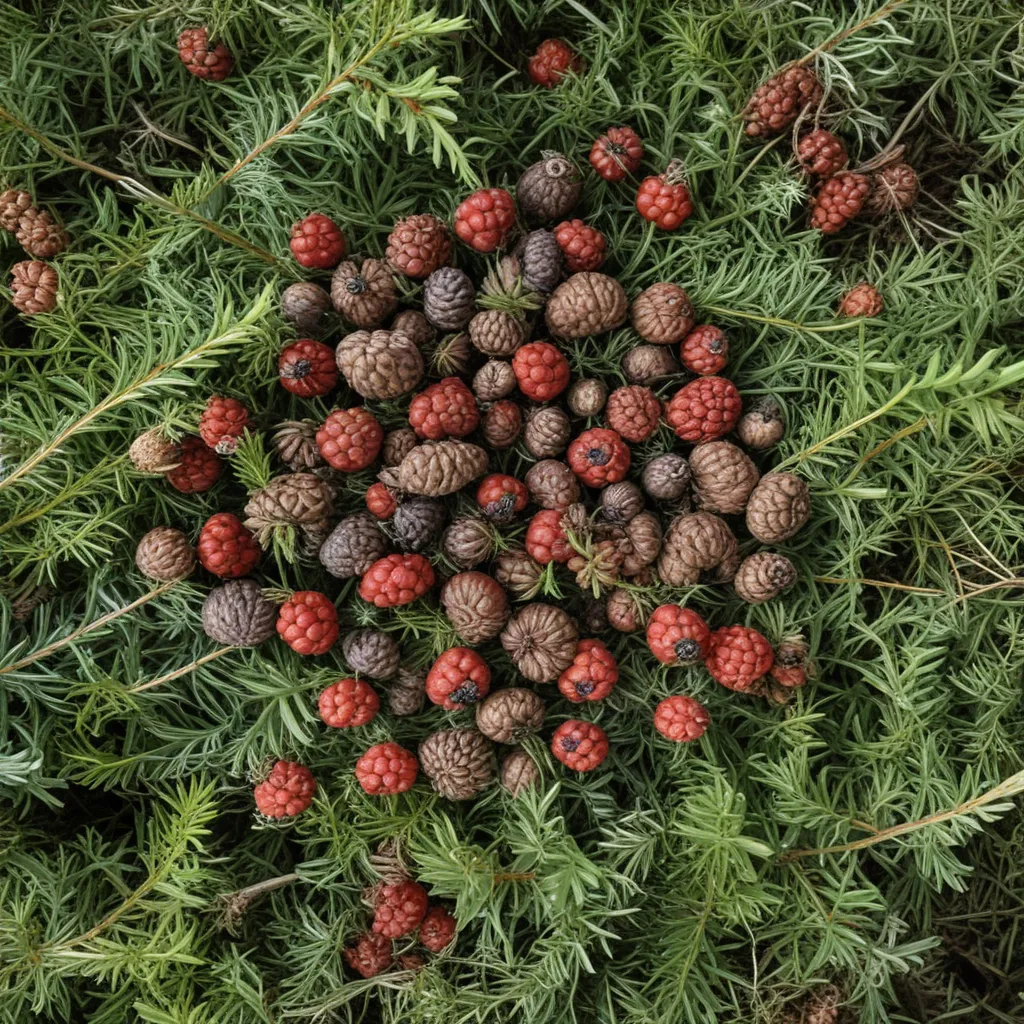
Crooked Pines Farm is a place of exploration and discovery, where visitors young and old can connect with the natural world through hands-on learning and outdoor adventures. One of our most popular activities is foraging for edible wild plants that thrive across our diverse landscape. From native flora that have sustained indigenous peoples for millennia to the seasonal bounty of overlooked “weeds,” the Crooked Pines Farm is a veritable treasure trove for the foraging-curious.
Native Flora
The sprawling Crooked Pines property is home to a remarkable diversity of native plants, many of which are perfectly suited for human consumption. One such example is the ubiquitous common purslane (Portulaca oleracea), a succulent weed found throughout our vegetable gardens and wildflower meadows. This nutritional powerhouse is packed with Omega-3s, vitamins, and antioxidants, and its crunchy, lemony leaves make a delightful addition to salads. Across the farm, you’ll also find patches of wild strawberry (Fragaria virginiana), whose sweet berries are a favorite snack of our youngest farm explorers.
As you meander through the woods, keep an eye out for the broad, serrated leaves of the mayapple (Podophyllum peltatum). While the fruit of this native perennial is edible when fully ripe, the rest of the plant contains toxins and should be avoided. Further along the trail, the dainty white flowers of the wild geranium (Geranium maculatum) dot the forest floor, their astringent leaves useful for treating minor wounds and infections.
Seasonal Availability
The foraging opportunities at Crooked Pines Farm are ever-changing, with different wild edibles appearing throughout the year. In early spring, you might spot the emerald-green rosettes of stinging nettle (Urtica dioica) – an excellent source of vitamins A and C, as well as protein, that becomes less palatable as the weather warms. Similarly, the tart, crimson stalks of rhubarb (Rheum rhabarbarum) are best harvested before the leaves unfurl, as they contain high levels of oxalic acid.
As summer arrives, the sunny meadows come alive with clusters of wild blackberry (Rubus spp.) and raspberry (Rubus idaeus) bushes, their sweet berries ripe for the picking. Keep an eye out, too, for the vibrant green leaves and pungent flowers of elderberry (Sambucus nigra), which can be used to make jellies, syrups, and wine when properly prepared.
Foraging Techniques
When foraging at the Crooked Pines Farm, it’s important to remember a few key principles. First and foremost, never consume a plant unless you are 100% certain of its identity. Many wild edibles have toxic look-alikes, so thorough research and careful observation are essential. We recommend that all foragers carry a field guide or download a plant identification app to assist in the process.
Secondly, practice sustainable harvesting techniques. When collecting leaves, stems, or flowers, take only what you need, and avoid damaging the entire plant. For fruits and berries, gather gently and leave plenty behind for the wildlife. And of course, always ask permission before foraging on private property.
Responsible Harvesting
At Crooked Pines Farm, we are committed to preserving the natural abundance of our land for generations to come. As such, we encourage our foraging guests to follow a few simple guidelines:
Sustainability Practices: Avoid over-harvesting any one plant species, and rotate your foraging locations to allow populations to regenerate. When collecting roots or rhizomes, be mindful not to remove the entire plant.
Environmental Considerations: Steer clear of areas that may have been treated with pesticides or other chemicals. Additionally, be cautious of plants growing near roadsides or other potential sources of pollution.
Ethical Foraging: Respect the land and its inhabitants. Keep noise to a minimum, avoid trampling sensitive areas, and never disturb nesting wildlife or their young.
Culinary Applications
The edible wild plants of Crooked Pines Farm offer a wealth of culinary possibilities. Common purslane leaves can be sautéed, added to salads, or even blended into pesto. The tart, ruby-red stalks of rhubarb make an excellent pie filling or compote when paired with a touch of sweetener. And the fragrant flowers of elderberry lend themselves beautifully to syrups, jams, and even fritters.
For a true taste of the farm, try our signature Crooked Pines Wild Greens Salad, featuring a mix of foraged leaves, flowers, and berries tossed in a simple vinaigrette. Or incorporate wild mushrooms, carefully identified and harvested on the property, into a savory risotto or omelete. The possibilities are endless when you have such a wealth of natural abundance at your fingertips.
Nutritional Benefits
Beyond their culinary delights, many of the edible wild plants at Crooked Pines Farm are nutritional powerhouses. Stinging nettle, for example, is renowned for its high levels of iron, calcium, and vitamins A and C, making it a valuable addition to soups, smoothies, and pesto. The berries of the elderberry plant, meanwhile, are brimming with antioxidants and have been used for centuries to support immune function.
Even the humble dandelion (Taraxacum officinale), often considered a pesky weed, is a veritable treasure trove of vitamins, minerals, and phytonutrients. Its leaves, flowers, and roots can all be consumed, providing a wide array of health benefits. And let’s not forget the wild strawberry, whose tiny fruits pack a surprisingly potent punch of vitamin C.
So whether you’re seeking a nutritional boost, a culinary adventure, or simply a deeper connection to the natural world, the edible wild plants of Crooked Pines Farm have something to offer everyone. Join us on a foraging foray and discover the bounty that surrounds us!


